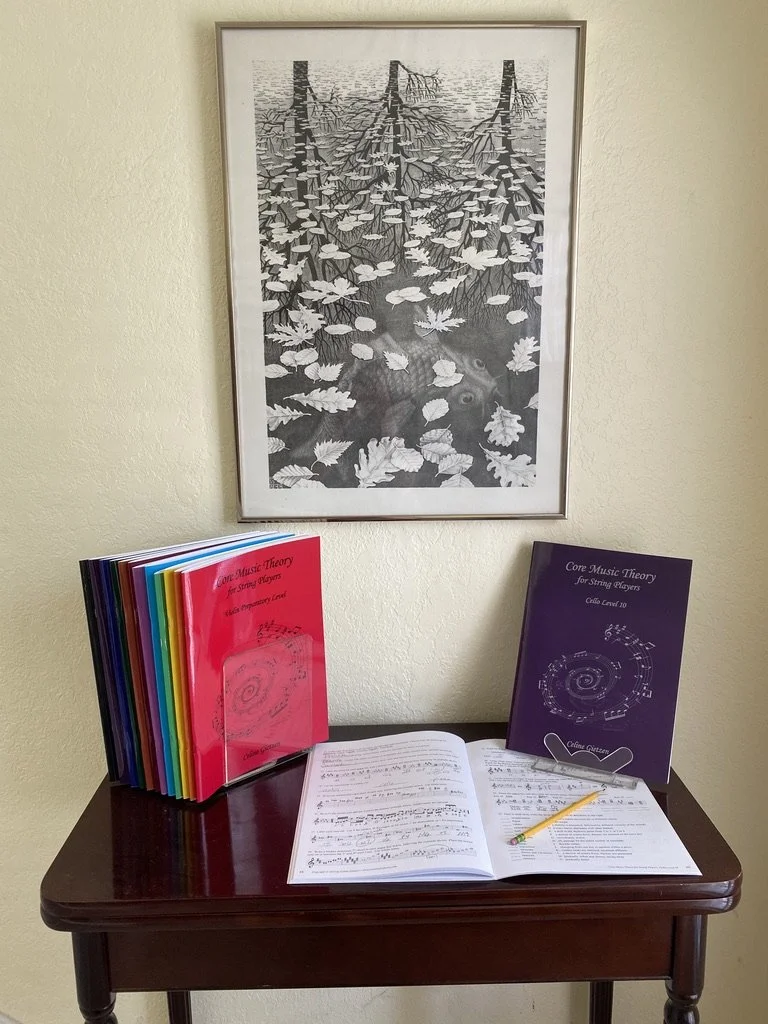About Core Music Theory
Students who understand notation and harmony are confident when learning new pieces, sightreading, and playing in groups. This course is designed to supplement private music lessons and string orchestra classes. It guides students from elementary to college entrance level music theory.
You will develop...
Note from the Author
A fluency in the language of music
A proficiency in writing and identifying scales, intervals, rhythms, chords, and more
An understanding of ear training—how to identify what you hear
The skills you need to improvise
The ability to apply this to your instrument to make you a stronger player
Thanks for your interest in Core Music Theory for String Players! First a little about me… I earned my degrees in Cello Performance, a Bachelor’s Degree from the Cleveland Institute of Music and a Master’s Degree from UCLA. After an extensive performing career and having taught private cello lessons and group string classes for about 30 years, I was inspired to write this series of music theory workbooks when I realized how much more instructional time I would have with students if they could simply learn this material outside of the lesson. Also, I wanted to teach students to think the way I and other string players do, relating these concepts to the instrument itself. For example, when I want to play a minor 6th on the cello, I’ll just use 1st finger on one string and 2nd finger on the next. Or, to play a major triad it's 1 – x4 – 1, or 4 – 1 – 4. Understanding how this works on the fingerboard simplifies the theory concepts and actually helps me as a cellist. I saw my students struggling with the simplest things. I’d say, “What’s a perfect 5th above B?” Student: “Oh! [counting on fingers] B, C, D, E, F… it’s B to F, right?” My response: “…ah …no.” So I knew there had to be a better way, and that is to utilize the instrument itself.
This series, Core Music Theory for String Players, guides students from the absolute beginning to college entrance level music theory and harmony. It consists of eleven levels of workbooks for each instrument (violin, viola, cello, and bass), as well as one answer key per instrument. It’s organized in such a way that students can grasp the concepts independently, with plenty of review for retention and three tests per volume to ensure mastery of the concepts and for teacher assessment.
I have my students buy a book for themselves and an answer key for the parent. They come to the lesson with occasional questions, and I spend a few minutes quizzing them on the material to be sure they truly understand. It has enabled me to be the teacher I really want to be, with time to teach technique and repertoire, and with students confident in note reading, rhythm, musical terms, and harmony.
I hope you too will benefit from learning these theory concepts before encountering them in your music, as it has helped my students and others internationally. I’m excited to see more and more schools, Suzuki programs, and music studios across the United States choose Core Music Theory as their required theory text. There are sample pages on the website, and there’s a quantity discount you’ll find on the checkout page. I hope you find this series to be as helpful as I have!
—Celine Gietzen




